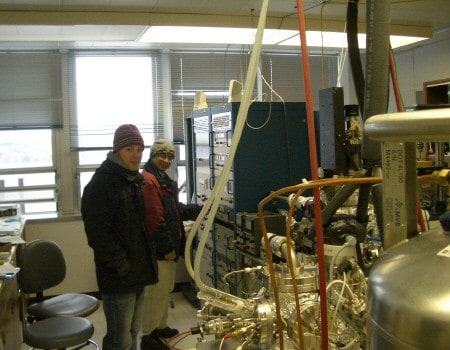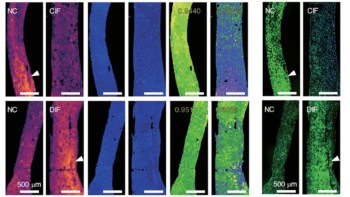Medical physicists in Canada have discovered that heavy-ion-beam cancer therapy can cause more damage to healthy DNA than previously believed. The harm is caused by low-energy secondary particles rather than the heavy ions themselves. The results could help medical physicists develop more accurate dose models for heavy-ion therapy (Phys. Rev. Lett. 95 153201).

Heavy-ion-beam cancer therapy employs protons or ions such as argon and neon that have energies of about 1 MeV per nucleon. One advantage of heavy-ion therapy over other techniques is that most of the energy is deposited in a small region of space, known as the Bragg peak, whereas X-rays, for example, deposit their energy continuously once they enter the body. However, little is known about how heavy-ion radiation damages DNA on the molecular scale, especially in the region beyond the Bragg peak. This damage might be caused by the heavy ions after they have lost most of their energy or by low-energy secondary ions. This is a worry because the tissue beyond the Bragg peak is often healthy.
Previously it was thought that heavy ions caused the same amount of damage as the conventional X-ray or gamma-ray radiation routinely used in medicine. These types of radiation cause damage by simple ionisation of atoms in cells, cleavage of single bonds in molecules, and attack by chemical radicals.
Michael Huels and colleagues at the University of Sherbrooke decided to look into this issue in more detail. They fired low-energy ions onto a film of biomolecules in an ultrahigh vacuum and analysed the ions that desorb from the film with a mass spectrometer. The results show that the initial damage caused by the ions at their track ends is significantly more complex, clustered and lethal than that induced by X- or gamma-rays. Severe damage can be caused by energies as low as 0.25 eV per nucleon — which is very low when compared with the energy of a typical heavy-ion beam.
The new work was prompted by previous experiments by Thomas Schlathölter and colleagues at Gröningen in the Netherlands. In 2003 Schlathölter noticed that low energy (1 to 200 eV) secondary particles could be produced by firing high-energy MeV-range heavy ions at DNA fragments. The latest experiments were made possible by the development of a machine that is capable of producing heavy ions with energies as low as just 1 eV in the Sherbrooke lab.
The team is now investigating how secondary ions, created by the primary ions inside DNA, can also cause damage although they have even lower energies than primary ions. “Our dream is that some day doctors will be able to manipulate the heavy-particle radiation effects at the molecular level – for example, by developing DNA ‘radiosensitisers’ that are specific to the secondary particles created in DNA during ion therapy,” says Huels.



